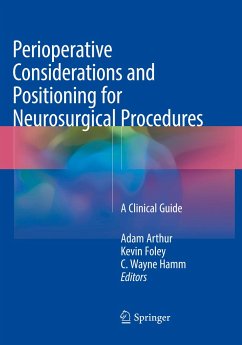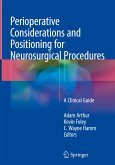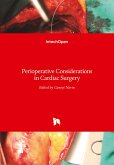There are relationships that exist between neuroanesthesia, neurosurgical procedures, individual patient pathology and the positioning of a patient for said procedure. A comprehensive examination of these relationships, their association with patient morbidity/mortality and how to approach these issues in an evidence-based manner has yet to become available. Positioning related injuries have been documented as major contributors to neurosurgical/neuroanesthesiology liability.
This text examines these relationships. It provides considerations necessary to the correct positioning of a patient for a neurosurgical procedure for each individual patient and their individual pathology. In other words, this text will demonstrate how to construct the necessary surgical posture for the indicated neurosurgical procedure given the individual constraints of the patient within the environment of anesthesia and conforming to existing evidence-based practice guidelines. Sections will address physiological changes inherent in positioning in relation to anesthesia for neurosurgical procedures, assessment of patient for planned procedure, as well as considerations for managing problems associated with these relationships. Additional sections will examine the relationship between neurosurgical positioning and medical malpractice and the biomechanical science between positioning devices and neurosurgical procedures.
Neurosurgery and its patient population are in a constant state of change. Providing the necessary considerations for the neurosurgical procedure planned under the anesthesia conditions planned in the position planned, often in the absence of multicase study literary support, without incurring additional morbidity is the goal of this text.
This text examines these relationships. It provides considerations necessary to the correct positioning of a patient for a neurosurgical procedure for each individual patient and their individual pathology. In other words, this text will demonstrate how to construct the necessary surgical posture for the indicated neurosurgical procedure given the individual constraints of the patient within the environment of anesthesia and conforming to existing evidence-based practice guidelines. Sections will address physiological changes inherent in positioning in relation to anesthesia for neurosurgical procedures, assessment of patient for planned procedure, as well as considerations for managing problems associated with these relationships. Additional sections will examine the relationship between neurosurgical positioning and medical malpractice and the biomechanical science between positioning devices and neurosurgical procedures.
Neurosurgery and its patient population are in a constant state of change. Providing the necessary considerations for the neurosurgical procedure planned under the anesthesia conditions planned in the position planned, often in the absence of multicase study literary support, without incurring additional morbidity is the goal of this text.
"Perioperative Considerations and Positioning for Neurosurgical Procedures: A Clinical Guide ... aims to serve as the authoritative textbook regarding the positioning and preoperative assessment of the neurosurgical patient. ... The aforementioned text is intended for neurosurgical practitioners of all ages and skill levels, but would best be set on a reference bookshelf in a neurosurgical resident call room. The strengths of this book include its accessibility/easy prose, the numerous pearls about positioning for surgical procedures, and the instructive photographs contained within." (David P. Bray, Operative Neurosurgery, Vol. 17 (1), July, 2019)








